Sidamo Fakui Coffee name characteristics Story Ethiopia Humbela Fakui Coffee Bean meaning
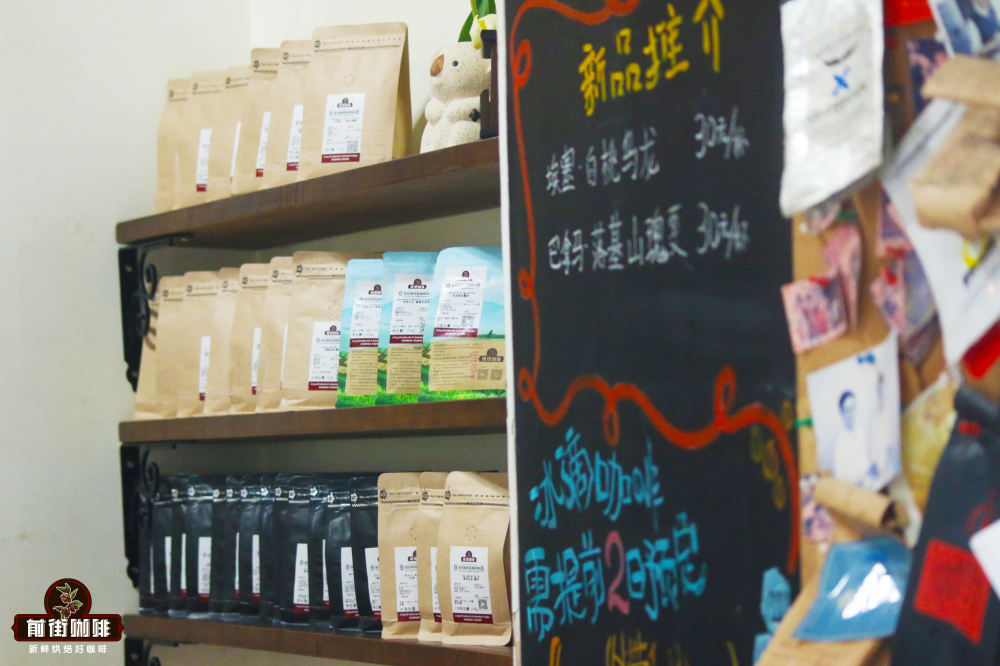
Professional coffee knowledge exchange more coffee bean information please follow the coffee workshop (Wechat official account cafe_style)
Sidamo is located in southern Ethiopia, where the climate and location are very suitable for the growth of coffee cherries. In Sidamo, the famous coffee beans are Yirgacheffe coffee and Guji coffee. As far as Qianjie Coffee knows, the ECX trading system has separated Yegashifi and Guji from Sidamo. Sidamo coffee is very sour and has a strong aroma. Qianjie Coffee feels that it is even better than Yega Xuefei in its aroma, which is very suitable for coffee fans who like strong and fragrant flavor. it can strike a perfect balance between aroma and taste, so Sidamo coffee is especially suitable for playing classical light music and enjoying it quietly in the leisurely afternoon or dusk.
Sidamo coffee producing area
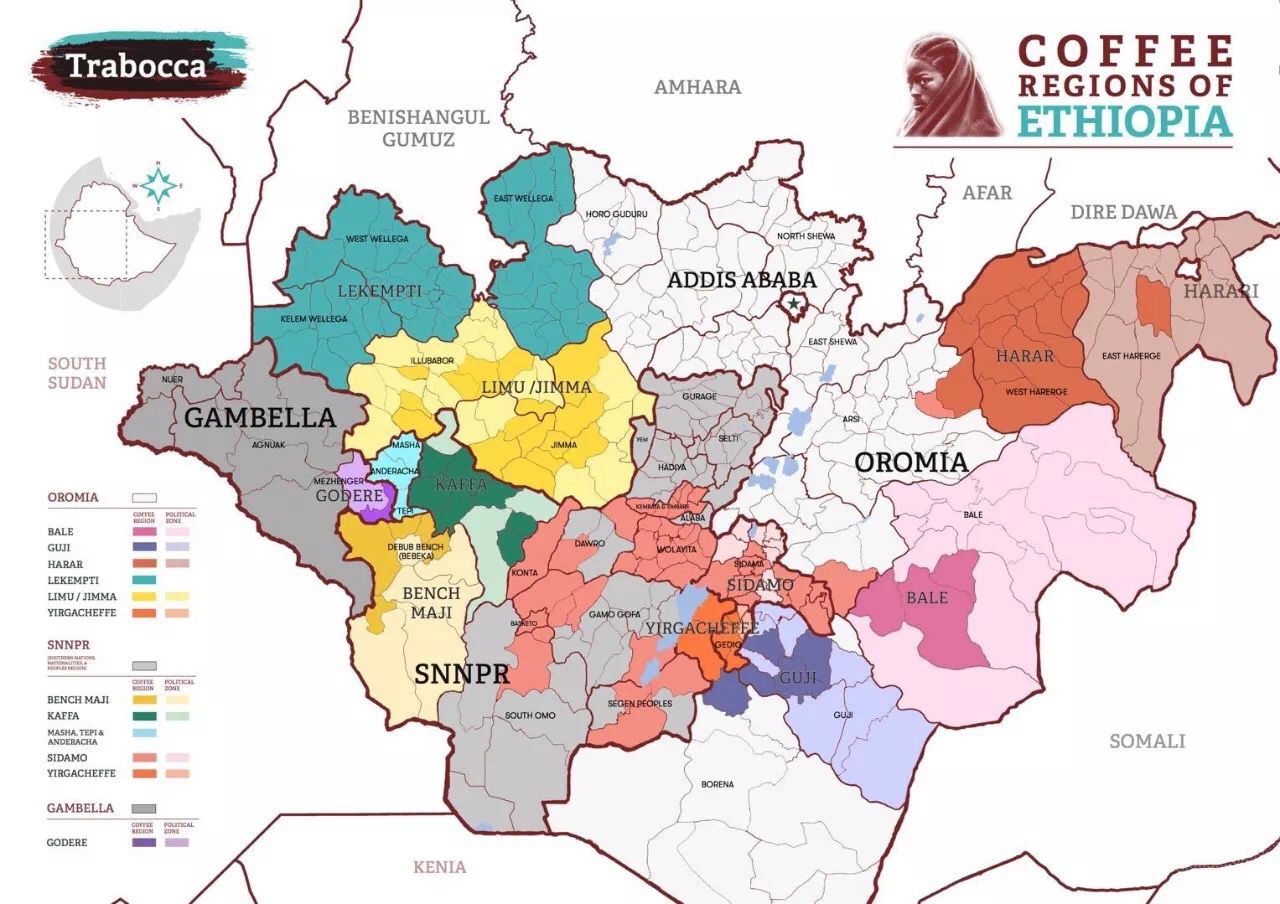
As one of the boutique coffee producing areas in Ethiopia, the Sidamo Coffee producing area is located in southern Ethiopia, bordering another boutique coffee producing area, Yega Xuefei. Sidamo is not only a coffee producing area, but also represents a coffee brand. Starbucks applied for the name sidamo in 2006, which caused dissatisfaction in the Ethiopian coffee industry and fought back. The trademark dispute lasted two years, which ended with Starbucks withdrawing its trademark application, and the two sides shook hands. Starbucks continued to purchase and sell Sidamo coffee beans in a cooperative manner.
Sidamo coffee is characterized by the diversity of coffee flavor produced in the producing area, because different regions have different soil composition, regional microclimate and countless native coffee varieties, which makes the coffee produced in each region have obvious differences and characteristics. According to the administrative division of Ethiopia, it can be divided into four levels: Region, Zone, Woreda and Kebele, which are equivalent to the provinces, cities, districts and streets of China. Huakui coffee beans come from the city of Guji in Sidamo province, and can be further divided into Hambella Kebele Hambella in Shakisso Woreda Shachiso. Generally speaking, when it comes to Humbela, experienced coffee fans must know that they are talking about Huakui coffee beans, because Humbela's Huakui coffee beans are so famous.
"Sakuran" is known as the maiden of Hambella, and this coffee is the top card among all flowers. Qianjie knows that behind the name is a story about the struggle of coffee beans. Before becoming a "Sakuran", this bean was just a simple "contest winner" in Ethiopia. In Ethiopia coffee is also an inconspicuous one, in the major producing areas of Yegashifi, Sidamo, Lim and Hara, this coffee bean is not known as "Sakuran" coffee bean is still unknown.
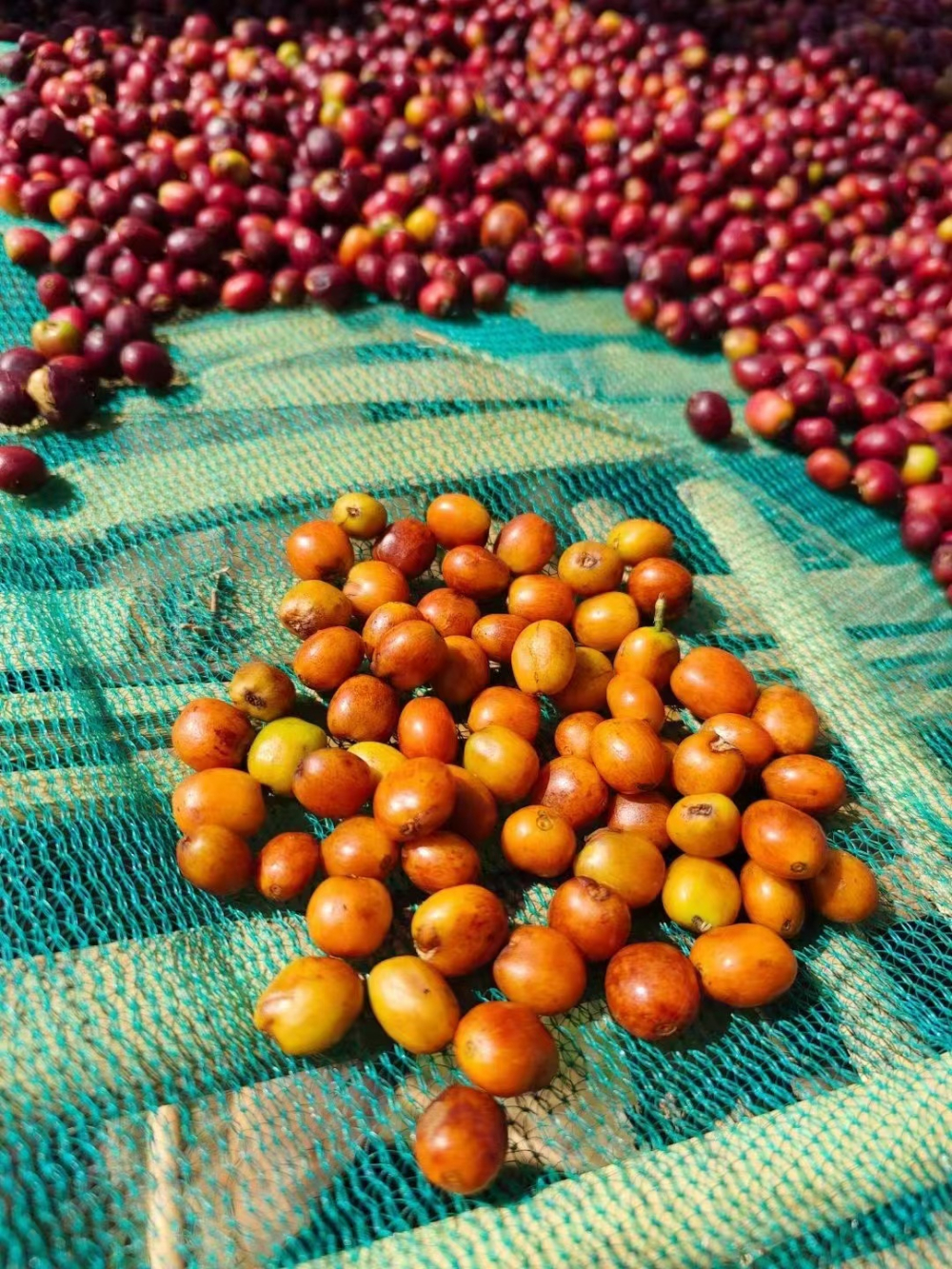
But in 2017, Ethiopia's DW Coffee Raw Bean sent the sun-treated raw bean to TOH (the Taste Of Harvest) for a competition and won the title by capturing the hearts of international judges with its rich strawberry cream flavor. Beijing Hongshunsheng bean merchants introduced the same batch of coffee beans into the Chinese market. Because of their unique flavor, they only need to make a slight improvement in the treatment of raw beans to have a chance to become the next "rose summer", so they have high hopes and are named "Sakuran". It means the first of all flowers.
In the Chinese section of the World Coffee Brewing Competition in the same year, contestant Li Jianfei won the second place that year by crushing many contestants who used rose coffee beans on the field with the same batch of award-winning Huakui coffee beans. Today, Huakui Coffee can be said to be one of the representatives of Ethiopian producing areas, deeply loved by coffee fans all over the world, and witnessed the development of Ethiopian coffee.

As can be seen from the map of coffee producing areas in Ethiopia, Guji is independent from Sidamo, because Guji's geographical location is superior enough, the coffee flavor produced is unique and elegant demeanor, and it was independent from Sidamo by ECX (Ethiopia Commodity Exchange) as early as 2010. Humberazi, which produces Huakui coffee beans, is the highest coffee producing area in Ethiopia.
This award-winning Sakuran is from Buku Abel Manor, so Buku Abel Manor is also known as Sakuran Manor. The manor is surrounded by mountains, the soil belongs to red brown organic soil, and the average annual rainfall exceeds 1200mm, which is very suitable for the growth of coffee cherries. Mature coffee fruits are also artificially picked, and the standard for fruits is also very strict. The sugar content must reach more than 30% before sun treatment can be carried out.

In the first two days of the sun operation, it is necessary to ensure the humidity of the red fruit so that its fructose fully begins to ferment. At the same time, because of the high altitude, the temperature can drop to about 12 degrees Celsius at night, so it will not produce the smell of overfermentation because the temperature is too high. The manor will be sheltered when the temperature is relatively high at noon to prevent the red fruit from getting sunburned. Choose only all-red and fully ripe coffee cherries, pick them manually, dry them on African scaffolding, limit the thickness of the fruit layer and turn it regularly throughout the day to ensure uniform sun exposure and ventilation, and more accurately grasp the degree of fermentation. In order to prevent sudden rain at night, it will be wrapped in thick plastic sheeting. In this way, the red fruit is fermented and dehydrated at a lower temperature. After 18 days of sun treatment, the moisture content of raw coffee beans was reduced to about 13%. Finally, the sun treatment was stopped, put into sacks, and put into the warehouse under the natural conditions of 12-22 degrees Celsius and 40-50% humidity for about 50 days for raw beans and further dehydration. Only when the moisture content of raw beans reaches about 10% can the treatment plant be transported and shelled and screened for sale. It is precisely because of such a superior growing environment that the flavor of Huakui coffee is also sweeter, with aromas of passion fruit, roses and sweet strawberries. the juice-like taste makes people feel like they are in the sweet and rich orchard. Qianjie Coffee believes that this is the unique charm of Sakui Coffee, and the champion is well deserved, and those who have tasted Sakui Coffee can not be defeated by the pomegranate skirt of Sakui Coffee.
So, what kind of coffee beans can be regarded as Sakuran coffee beans? Qianjie Coffee mentioned earlier that Huakui coffee beans come from Buku Abel. In addition, it must be sun-treated coffee beans to be regarded as Sakui coffee beans.
Buku Abel Ethiopia's native language means "new place". In this ancient country of more than two thousand years, with a population of 100 million, it blocks the road to Asia through the Great Rift Valley, but new virgin lands are still found waiting to be developed on this plateau, which is quite a newly developed land compared to the millennium culture.

Buku Abel is a high-altitude primitive tribe located in southeastern Ethiopia and located in the Hambela region of Guji, with a population of about 30,000. this small village, like most Ethiopian coffee gardens, grew up in wild primeval forests, where coffee farmers passed on from generation to generation and planted native bananas and interspersed local native coffee trees in banana trees.
Friends who have been paying attention to Sakui coffee beans should be able to find that the naming of Sakui coffee beans is very interesting, which appears in the way of "Sakui X.0". The naming method is that with the superposition of the year, the following numbers will also be superimposed. For example, Sakuran 2.0 in 2018, Sakuran 3.0 in 2019, Sakuran 4.0 in 2020, and Sakuran 5.0 in 2021 are of course. In that case, the harvest work of the 2022 production season has come to an end. If there is no accident, this year's harvest will be Sakui 6.0.
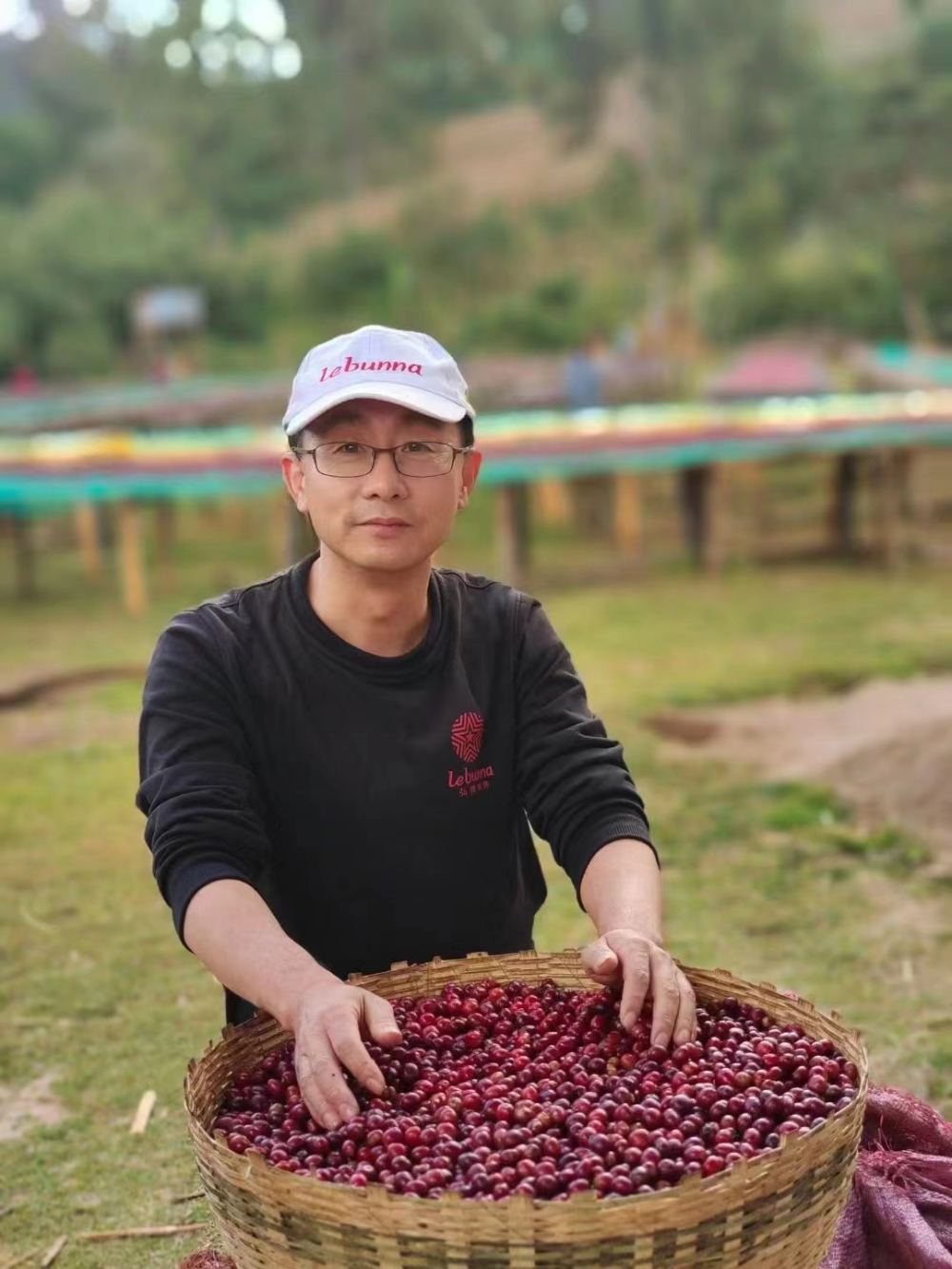
For the arrival of Huakui 6.0, Qianjie and his friends are very much looking forward to it. However, if you can't eat hot tofu in a hurry, you have to wait after all. It is expected that Sakui 6.0 will arrive in Hong Kong in April. Qianjie has also booked a batch at the first time. Friends can pay attention to the news of Qianjie. Qianjie will also live up to expectations and let everyone taste the freshness of Sakui 6.0.
Today, there are two types of Sakuran coffee beans, small Sakuran and Sakui 5.0, on the bean shelf in front of the street. In Qianjie, some small particles of coffee beans were found in the coffee beans of Huakui 2.0 and 3.0, and the same small particles were also found in the coffee beans of Huakui in the following seasons. Through the cup test in the front street, it is found that the aroma of Huakui coffee mainly comes from these small granulated Huakui coffee beans.

In 2020, DW's Buku Abel processing plant will also separate these small particles of Sakuran coffee beans and set up a brand, that is, "Xiao Grain Sakuran". Through the cup test of the Sakui coffee beans on the bean shelf in Qianjie, it is found that the aroma of Xiaogui coffee is more full, and the flavor is more similar to the strawberry cream flavor of 2017 toh sun champion, while Sakui 5.0 is more inclined to the flavor of Guji producing area, citrus and berry flavor, light flower aroma and tea feeling.
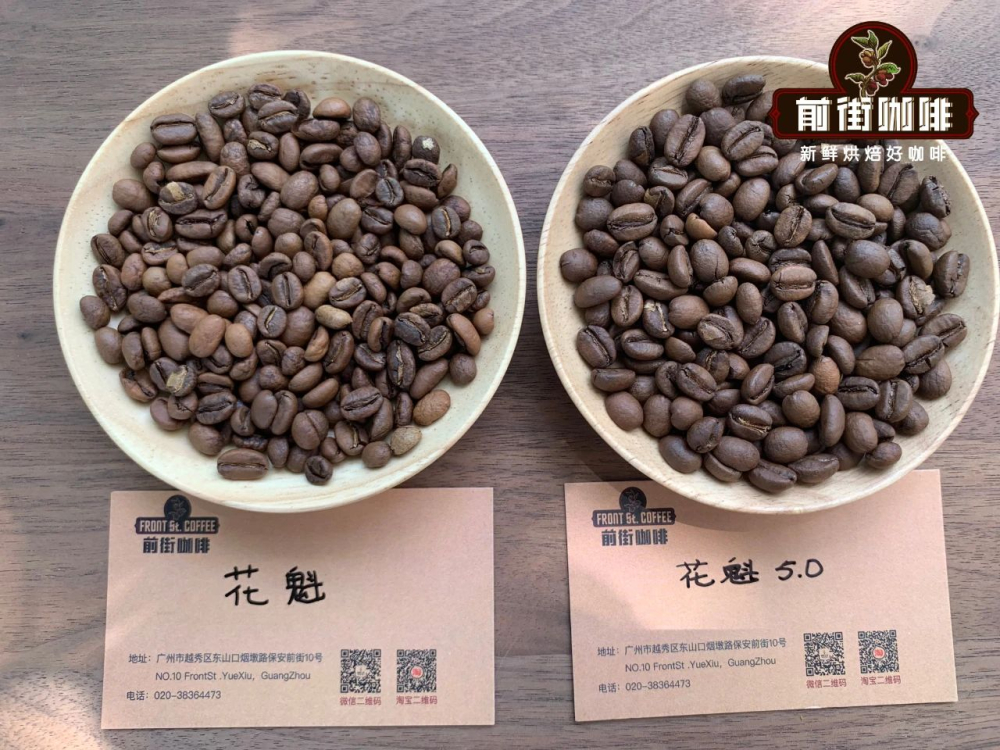
If you want to find out the difference between the flavor of the two types of coffee beans, of course you have to start directly. The coffee beans sent to our friends in Qianjie are all baked within 5 days of placing the order, and the goods arrive just after 4 to 7 days of bean cultivation, which is the period of the best flavor. On the other hand, some friends do not have the option of injecting grinding equipment instead of grinding powder in their homes, and Qianjie also provides this service, but when the coffee beans are ground into powder, the exhaust activity is more active and the flavor substances dissipate more quickly, so buy whole beans, grind and flush now, and the flavor is better.
And some friends who own coffee bean grinding appliances at home often ask Qianjie: how much is appropriate for grinding. Due to the difference of grinding equipment, the scale used is also very different. In order to have a more uniform data, Qianjie will use the Chinese standard No. 20 screen to determine the grinding degree of coffee beans. The grinding degree of hand punching is generally between 70% and 80% according to the depth of baking.
Qianjie Huakui coffee beans, in order to highlight the flavor of berries, citrus and tropical fruit juice, adopt the degree of medium-light baking, so the grinding degree is 80% of the pass rate of Chinese standard No. 20 sieve, using hot water at 90 degrees Celsius, and equipped with Hario V60 filter cup for brewing.
Filter cup: Hario V60
Water temperature: 90 degrees Celsius
Powder quantity; 15g.
Ratio of powder to water: 1:15
Grinding degree: the pass rate of Chinese standard No. 20 screen is 80%.
First inject 30 grams of hot water and steam for 30 seconds, inject fine water from the central point and slowly circle to 125 grams for segmentation. when the water level in the filter cup is about to expose the powder bed, continue to circle water injection to 225 grams to stop water injection, the total extraction time is about 2 minutes.
For more boutique coffee beans, please add private Qianjie coffee on Wechat. WeChat account: kaixinguoguo0925
Important Notice :
前街咖啡 FrontStreet Coffee has moved to new addredd:
FrontStreet Coffee Address: 315,Donghua East Road,GuangZhou
Tel:020 38364473
- Prev
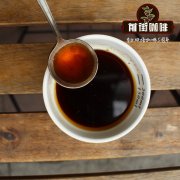
Appearance characteristics of honey treated coffee beans is honey treated coffee beans sweet? Classification of coffee beans by honey treatment
Professional coffee knowledge exchange more information about coffee beans Please follow the appearance of coffee beans treated with honey in the coffee workshop (Wechat official account cafe_style). Is coffee bean sweet when treated with honey? What are the categories of honey-treated coffee beans? Why is it called honey treatment? There are three main ways to treat coffee: sun exposure, water washing and honey treatment. The method of tanning is before removing the shell and pectin layer.
- Next

Coffee Flavor characteristics of Humbera Girl Sakuran 2.0 Story in Guji producing area of Ethiopia
Professional coffee knowledge exchange more coffee bean information Please follow the experiment in Coffee Workshop (official Wechat account cafe_style) Resource Optimization of Sakui 2.0 before this, coffee farms in Ethiopia were mostly in their native state: after rain, flowers blossomed, flowers fell and fruit hung, unattended. It was not until the fruit was ripe that the local farmers went to the mountains to pick it and sold it to the processing plant in exchange for a little.
Related
- Detailed explanation of Jadeite planting Land in Panamanian Jadeite Manor introduction to the grading system of Jadeite competitive bidding, Red bid, Green bid and Rose Summer
- Story of Coffee planting in Brenka region of Costa Rica Stonehenge Manor anaerobic heavy honey treatment of flavor mouth
- What's on the barrel of Blue Mountain Coffee beans?
- Can American coffee also pull flowers? How to use hot American style to pull out a good-looking pattern?
- Can you make a cold extract with coffee beans? What is the right proportion for cold-extracted coffee formula?
- Indonesian PWN Gold Mandrine Coffee Origin Features Flavor How to Chong? Mandolin coffee is American.
- A brief introduction to the flavor characteristics of Brazilian yellow bourbon coffee beans
- What is the effect of different water quality on the flavor of cold-extracted coffee? What kind of water is best for brewing coffee?
- Why do you think of Rose Summer whenever you mention Panamanian coffee?
- Introduction to the characteristics of authentic blue mountain coffee bean producing areas? What is the CIB Coffee Authority in Jamaica?

